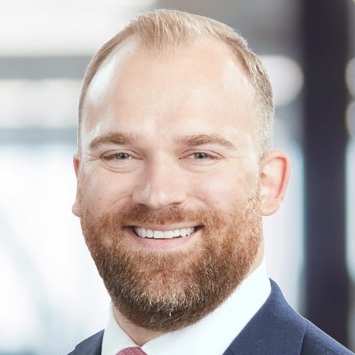FTC challenge adds to the strain on the hospital-based anesthesiology workforce
A Federal Trade Commission (FTC) challenge to the purchase of a major anesthesia provider, after a rocky couple of years for anesthesia providers, has created an even murkier outlook for hospital-based anesthesia services.
The FTC’s suit, filed in September against U.S. Anesthesia Partners, Inc. (USAP) and the private equity firm Welsh, Carson, Anderson & Stowe, claims the defendants engaged in a 10-year “rollup” scheme to acquire and consolidate large anesthesiology practices in Texas and establish price-setting agreements with USAP and its competitors. This venture to create one dominant provider “harmed consumers and competition by driving up the price of anesthesiology services in Texas,” the FTC wrote in a statement.a
The anesthesiology segment already had faced a nationwide deficit of 12,500 physicians before the pandemic, and the combination of the FTC suit, the passage of the No Surprises Act and changing academic requirements for nurse anesthetists is worsening the outlook.
“The shortage of providers is being driven by a multitude of sins, if you will,” said David E. Irigoyen, MHA, FACHE, CMPE, vice president of anesthesia services with Sullivan Healthcare Consulting LLC, Alpharetta, Ga.
National implications
Coupled with No Surprises Act rules, the FTC lawsuit may lead to changes in the way anesthesia companies are employed in healthcare if private equity investors dial back on their interest in owning such companies. USAP alone employs 4,500 clinical team members across 12 states and Washington, D.C., while there were 53,206 active anesthesiologists in the United States in January, according to Kaiser Family Foundation. The American Association of Nurse Anesthesiology estimates there 61,000 certified registered nurse anesthesiologists in the nation.
“The FTC has been very public in its views about so-called rollup transactions and the impact of private equity firms like Welsh Carson, on the healthcare industry,” noted Bill Katz, a litigation and antitrust partner with Dallas-based Holland & Knight.
Katz said he anticipates that the FTC and the U.S. Department of Justice (DOJ) will continue to focus on private equity firms and their rollup strategy in healthcare and other industries.
“Given the enforcement focus on these types of transactions, it will likely deter some firms from engaging in certain transactions,” Katz said. “But if a firm believes that a transaction is procompetitive, it’s likely to proceed anyway, regardless of what the FTC and DOJ think about the private equity industry.”
Heading for the exit
Meanwhile, 60% of the anesthesia physician workforce is 55 or older, and although certified registered nurse anesthetists (CRNAs) can take up some of that slack, a decision to adopt a longer doctoral degree program means the CRNA field essentially lost a year’s worth of graduates.
And from 2021 to 2022, more than 2,800 physicians dropped out of the anesthesiology workforce, according to Definitive Healthcare. The departures were driven, in part, by the fact that unlike many other specialties, anesthesia care is not possible remotely making such providers more vulnerable to burnout.
Even as the provider supply is dwindling, many anesthesiologists and CRNAs are opting for locum tenens work, which translates to higher costs for hospitals and other providers. Some previously profitable surgery centers are no longer making money because of the higher cost of anesthesia providers working under locums contracts, Irigoyen said. Locum rates are typically between 175% and 200% higher than those of an employed anesthesia clinical provider.
Aging population boosting demand
Compounding these factors is strong growth in patients 65 and older contributing to higher spending, due, in part, to an increase in outpatient procedures, said Kimberly Cantees MD, MBA, clinical director of anesthesiology and perioperative medicine for UPMC Presbyterian Hospital, Pittsburgh. Demand for surgical services in the general population continues to rise at a rate of 2%-3% per year, and demand for anesthesia services in non-operating-room locations has increased significantly, and even exponentially, according to some observers, Cantees said.
Hospital spending for anesthesia expenses has also risen by 20% over the past three years. One driving factor is the cost of anesthesia drugs, which has increased at a similar clip, said Erik Swanson, senior vice president and leader of the data analytics practice at Kaufman Hall.
But drug costs are not the only factor affecting anesthesiology expenses.
“Costs for those anesthesiologists have also risen, but interestingly enough, the price or cost for that labor on a relative-value-units or productivity basis has fallen,”

“Costs for anesthesiologists have risen, but interestingly enough, the price or cost for that labor on a relative-value-units or productivity basis has fallen,” Swanson said.
The No Surprises Act and the independent dispute resolution (IDR) process had unintended consequences, according to some.
“Based on discussions with anesthesia practice leaders, payor insurers have utilized the IDR to reduce their required reimbursement by refusing to go in-network with the anesthesia providers,” wrote Mallorie Holguin and Patrick McGinn in a VMG Health analysis.b
Cantees said the No Surprises Act has negatively impacted hospital-based practices such as emergency medicine, anesthesiology, radiology and pathology, with a decrease in reimbursement from insurance companies of close to 40% in some regions of the country.
Additionally, CMS in its 2023 Medicare Physician Fee Schedule called for a 4.5% Medicare payment cut to anesthesiologists, further decreasing revenue, she said.
Lawsuit arguments
The two sides in the FTC suit probably won’t see a resolution for months.
“The FTC likely believes that filing this lawsuit will help deter consolidation in the anesthesiology industry, preserve competition among anesthesiology groups and retain competitive prices for anesthesiology services,” said Katz.
That said, not every private equity transaction or “rollup” strategy is anticompetitive. The FTC and the DOJ may be overlooking advantages of these types of transactions, said Katz.
Footnotes
a. “FTC challenges private equity firm’s scheme to suppress competition in anesthesiology practices across Texas,” FTC news release, Sept. 21, 2023.
b. Holguin, M., and McGinn, P., “Understanding & solving the new reality for anesthesia services,” VMG Health, June 15, 2013.





